Deadline: 5pm on Friday 23 February 2024
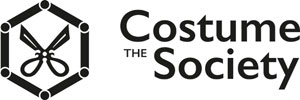 This training bursary is targeted at trainees and prospective trainees of fashion textile crafts who are experiencing financial hardship. It is sponsored by The Costume Society and is one of a suite of awards and bursaries offered by Heritage Crafts to support and celebrate heritage craftspeople.
This training bursary is targeted at trainees and prospective trainees of fashion textile crafts who are experiencing financial hardship. It is sponsored by The Costume Society and is one of a suite of awards and bursaries offered by Heritage Crafts to support and celebrate heritage craftspeople.
Apply for up to £4,000 to start training in a fashion textile craft or to further develop your skills.
 Many people are dissuaded from training in fashion textile crafts because of the cost, and therefore the make-up of the sector is not truly representative of the mix of backgrounds that make up the UK as a whole. This bursary has been set up to help cover or subsidise the cost of training for someone who would otherwise be prevented from pursuing this career path as a result of the cost.
Many people are dissuaded from training in fashion textile crafts because of the cost, and therefore the make-up of the sector is not truly representative of the mix of backgrounds that make up the UK as a whole. This bursary has been set up to help cover or subsidise the cost of training for someone who would otherwise be prevented from pursuing this career path as a result of the cost.
You could be just starting out on your journey in fashion textile crafts or at the point where you want to turn a hobby into a career, or you could already be a maker who is looking to further refine your skills.
Fashion textile crafts can include, but are not limited to, dressmaking, tailoring, pattern cutting, hat making, millinery, glovemaking, fabric pleating, corset making, and so on. Applications for training that prioritises the acquisition of practical hand skills will be favoured over training that is predominantly theoretical or design-oriented.
If you are new to a craft and are struggling to find the right training for you, after your own research, please get in touch and we may be able to support. Successful applicants will be supported by the Heritage Crafts team to develop an action plan. We will work with you to monitor progress and support you to achieve your aims.
What can this grant be used for?
There are a number of routes to learning a craft skill. Applicants can apply for a grant for any amount up to £4,000 which can cover or contribute towards:
- the costs of training with a craftsperson;
- the costs of attending a specialist training course;
- the costs of attending an accredited training course;
- undertaking a self-directed programme of training with one or more craftspeople;
- the cost of specialist tools or materials, books or study materials or low cost travel (no more than 25% of total budget).
The bursary cannot be used for general living expenses, research, promotional activities or anything else. Successful applicants will be supported by the Heritage Crafts team. We will work with to you monitor progress and support you to achieve your aims.
- Bursaries will be only awarded to crafts used in the creation of garments and accessories that include a substantial element of textiles.
- Fabric textile production is eligible if it is intended for garment and accessory making, but not for things like upholstery or tapestry.
- Footwear production that involves stitching is eligible.
- Hat making and millinery are eligible.
- Wig making is eligible, but only if it for costume.
- Button and fastening making and ribbon weaving are eligible, but only if they are for garments or accessories.
- Jewellery making is only eligible if it is of a type that is ineligible for our precious metal bursaries.
- Watchmaking is not eligible.
How to apply
Please apply by filling out the form below. We will also accept a video application of no more than 15 minutes in length in which you address all of the questions in the form below. You can access a list of questions here.
The deadline for applications is 5pm on Friday 23 February 2024. If you have any questions or need assistance with the application process, please email Tess Osman at tess@heritagecrafts.org.uk.
Assessment, shortlisting and final selection will be carried out by the Heritage Crafts judging team, and interviews will be carried out by Zoom. If you are new to a craft and you would like assistance with finding a trainer, please get in touch and we will do what we can to help.
 YEAR 2 THEME: ENDANGERED CRAFTS
YEAR 2 THEME: ENDANGERED CRAFTS
Deadline for applications: 12 February 2024
Online information session: 25 January 2024, 4pm
The Society of Antiquaries of London is partnering with Heritage Crafts for a second year to call for Heritage Crafts member craftspeople who practice endangered crafts to submit expressions of interest in becoming the 2024 Maker in Residence (MiR) at Kelmscott Manor, the former home of internationally renowned writer, designer-craftsman, conservationist and revolutionary socialist, William Morris.
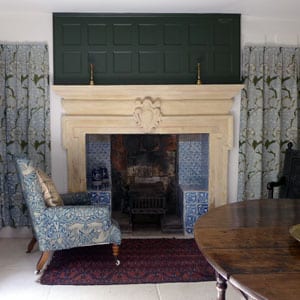 For 25 years everything about the 17th-century Manor was of profound inspiration to William Morris. Both the Manor and its setting in rural Oxfordshire were a fertile source of ideas, influencing his art, literature and social thinking as well as his passionate, imaginative engagement with history and nature. Integral to Morris’s ethos was his tireless championing of heritage crafts and the handmade. Morris’s values have never been more relevant than they are today.
For 25 years everything about the 17th-century Manor was of profound inspiration to William Morris. Both the Manor and its setting in rural Oxfordshire were a fertile source of ideas, influencing his art, literature and social thinking as well as his passionate, imaginative engagement with history and nature. Integral to Morris’s ethos was his tireless championing of heritage crafts and the handmade. Morris’s values have never been more relevant than they are today.
As part of the Society of Antiquaries’ NLHF-funded £6 million Kelmscott and Morris: Past, Present and Future project, the Kelmscott Manor residency is a unique opportunity for the successful candidate to reflect Morris’s advocacy of the handmade and contribute to his legacy by playing a distinctive part in the Manor’s programme of public engagement.
This year (2024) will see the second of three residencies by members of Heritage Crafts, and for this year will focus specifically on ‘endangered’ and ‘critically endangered’ crafts as featured in the 2023 edition of the Red List of Endangered Crafts (https://heritagecrafts.org.uk/redlist). The project presents an opportunity to showcase endangered crafts in an iconic rural setting visited annually by over 27,000 people. At the heart of the ‘new’ Kelmscott Manor is our determination to reflect William Morris’s inclusivity: ‘I do not want art for a few, any more than education for a few or freedom for a few’, by building its appeal and accessibility to a wider base of audiences through providing the richest experience possible.
What we are looking for
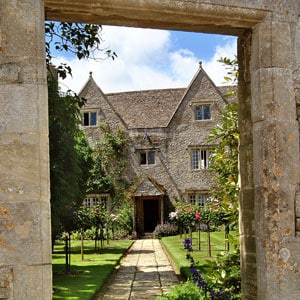 William Morris once described Kelmscott Manor’s beauty and atmosphere as very stimulating to the imagination. We are seeking an MiR who will be as inspired by it as Morris was over 150 years ago, and who can inspire and enthuse others by encouraging creative engagement. The MiR will be a professional working in an endangered craft that features in the 2023 edition of the Red List; we are keen to emphasise to potential applicants that our interest is not limited to practitioners of one of the crafts Morris himself was interested in or practiced.
William Morris once described Kelmscott Manor’s beauty and atmosphere as very stimulating to the imagination. We are seeking an MiR who will be as inspired by it as Morris was over 150 years ago, and who can inspire and enthuse others by encouraging creative engagement. The MiR will be a professional working in an endangered craft that features in the 2023 edition of the Red List; we are keen to emphasise to potential applicants that our interest is not limited to practitioners of one of the crafts Morris himself was interested in or practiced.
The MiR will be a practitioner with the ability to recognise and mediate the unique qualities of Kelmscott and the legacy of Morris’s life and work here. It is important that they have excellent communication skills and enjoy working with people. Experience of working in an educational context would be an advantage. The MiR will need to adapt to working on a small and busy site; although they will wherever possible be supported by staff and/or volunteers, they must also be confident in working on their own.
What we’ll ask of you
- a commitment to work in residence at Kelmscott Manor, responding creatively to the Manor and/or its site and setting
- a commitment of 25 days’ scheduled attendance on site, spread between April and the end of October 2024. These will incorporate getting to know the estate and collections; preparing and creating work; delivering the activities stated below.
- to provide a minimum of FOUR family-friendly workshops on Open Days (Thur, Fri, Sat)
- to provide a minimum of FOUR demonstrations on Open Days (Thur, Fri, Sat)
- to provide a minimum of TWO workshops for school or community groups (Mon, Tues) or produce resources for use by those groups
- to work in collaboration with the Manor to create ONE digital asset
- to create ONE asset (to be completed by 1 September) to be retained by the Manor (in the collections, including Learning & Outreach) or for disposal for fundraising purposes to benefit the Learning & Outreach Programme.
In return
The successful applicant will be offered a Residency over a period of seven months (April to the end of October 2024). This is an exciting opportunity for the MiR to foster a wider understanding of their craft and its heritage significance, to develop their practice and create new work whilst based at a site of international renown.
- The MiR will be paid a fee of £300 per day (a proportion of the fee can be paid in advance)
- £2,500 is available towards the cost of materials
- An additional £3,000 is available towards travel/accommodation (to be claimed retrospectively on a monthly basis)
- The MiR will be provided with a (fully accessible) small studio space with sink in the Learning Barn at the Manor
- The equivalent of TWO days’ dedicated time with the Curator, who for research purposes can provide access to archive material and collections in store
Practicalities
The pattern for the residency is entirely flexible and will depend on the successful proposal. We ask that a substantial proportion of time will be spent in or around the Manor and site. As the Manor is a Grade I Listed Building certain site restrictions may apply. The project partners will seek to facilitate the MiR’s wishes where possible; however these restrictions should be recognised from the outset.
The majority of the buildings have step-free access, including the Learning Barn where the MiR will have their studio space. There is step-free access to the ground floor of the Manor, but access to the upper floors are via stairs only. We are committed to supporting any access requirements of the MiR and ensuring that there are no barriers to participation in the residency.
An agreement setting out the residency outcomes and commitments will be discussed and agreed with the successful candidate in advance of the residency commencing. A DBS check will be required.
Management
On a day-to-day basis the project will be managed by Hannah Britton (Learning & Outreach Officer) and Carrie Marks (Visitor & Volunteer Manager).
Timetable
- Online information session about Kelmscott Manor and the Residency – 25 January 2024, 4pm to 5pm (to attend please register here)
- Deadline for applications – 12 February 2024
- Interviews (to be held at Kelmscott Manor) – 4 March 2024
- Appointment of MiR – 1 April 2024
- Residency period – flexible between April and end of October 2024
Who is eligible to apply
- Residents of the UK
- Aged 18 and above
- Member of Heritage Crafts (click here to become a member for £20 a year)
- Practice an ‘endangered’ or ‘critically endangered’ crafts as featured in the 2023 edition of the Red List of Endangered Crafts
- Have at least THREE years’ experience in your chosen craft
Information session
We will be running an information session to provide more details about Kelmscott Manor and Morris’ legacy, and to answer any of your questions, on Zoom on Thursday 25 January 2024, 4pm to 5pm. To attend please register here: https://zoom.us/meeting/register/tJcqc-muqDsvHtxGWLN91T86Y0mMYLcDs__n#/registration
Application procedure
Your application should consist of a 1-page proposal, a 1-page curriculum vitae and up to 6 images of recent work. Please also include the name and address of two referees, at least one of whom should be a professional contact.
Applications should be emailed to Kathy Haslam (kathyhaslam@kelmscottmanor.org.uk) and Hannah Britton (hannah.britton@kelmscottmanor.org.uk).
Please ensure your application email has ‘Maker in Residence’ in the subject line and that it is sent to both of the contact emails specified here. The deadline for applications is 12 February 2024. If you encounter any difficulties with the application process, please contact Kathy or Hannah via email or telephone on 01367 252486.
As a UNESCO-accredited NGO for Intangible Cultural Heritage, we echo the UN Secretary General’s statement that “[h]ostilities in Gaza and Israel have created appalling human suffering, physical destruction and collective trauma across Israel and the Occupied Palestinian Territory. The international community has a responsibility to use all its influence to prevent further escalation and end this crisis”.
Despite not operating in the region, we agree that it is incumbent upon all of us, individuals and organisations alike, not to remain silent at this moment in history. We do not claim to have the answers to the complex political situation, but, like so many others, are here to listen to and learn from those directly involved. What we can do is bear witness to the humanitarian and cultural catastrophe and lend our voice to the calls for an immediate ceasefire and for all parties to uphold international law.
Our thoughts and feelings remain with all those subject to violence, displacement, and trauma, as we continue to learn how best to respond to the unfolding situation.
At last month’s Heritage Crafts Awards Winners’ Reception at the College of St George, Windsor Castle, bursary recipient Hannah Girvan made this speech, which resonated with many of us there:
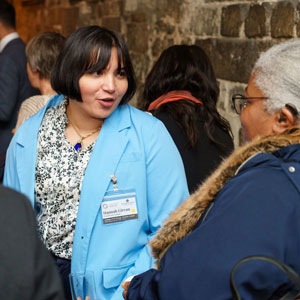 “I burnt out in an office job during the pandemic, as Equity, Diversity and Inclusion Lead, when I realised my role was tickboxing and that nothing would change. It broke my heart. To deal with the burnout I spent time in the forest as a Ranger and that was the first time I used power tools. Learning more about wood as a material and a living part of the habitat became integral to my existence. It became part of who I was. I shifted everything to make it my focus.
“I burnt out in an office job during the pandemic, as Equity, Diversity and Inclusion Lead, when I realised my role was tickboxing and that nothing would change. It broke my heart. To deal with the burnout I spent time in the forest as a Ranger and that was the first time I used power tools. Learning more about wood as a material and a living part of the habitat became integral to my existence. It became part of who I was. I shifted everything to make it my focus.
“During the pandemic I also came out to my family, friends and to myself as bi. Because once you start stepping into who you are it’s impossible to turn back.
“As an apprentice joiner I had to show up as myself because at this point there was no other form of being. It meant fighting back when sexism or racism happened. Questioning why that was allowed. Why no-one was calling it out as inappropriate or demeaning. I just wanted to go to work to do my craft and learn. I ended up changing workshops and it’s been a lot better for my health. It means I can show up to work and crack on without first having to defend parts of myself others might not have to. The white noise began to fade.
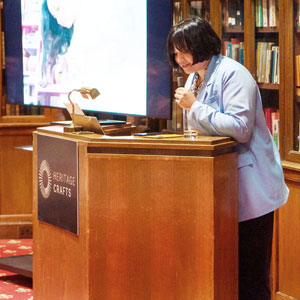 “I think I can get through pretty much anything as long as I am a maker. It helps me process life and helps me know myself better, which in itself is a powerful thing. Not everyone will be able to live their life as themselves or to know what their voice is or what creativity means to them. We are able to speak without needing words and show these parts of ourselves through the things we make. There’s something incredible in that.
“I think I can get through pretty much anything as long as I am a maker. It helps me process life and helps me know myself better, which in itself is a powerful thing. Not everyone will be able to live their life as themselves or to know what their voice is or what creativity means to them. We are able to speak without needing words and show these parts of ourselves through the things we make. There’s something incredible in that.
“Life is hard at the minute. Cost of living is insane and I’m currently trying to find somewhere to live in Devon and that’s really stressful. Those day-to-day stresses and things like seeing the EDL on the news and what’s going on around the world really put you into survival mode and gives everything a bleak quality.
“But then we make. Knowing that what we make is truly ours and a part of us went into each piece. That we’re adding to the world not detracting from it. When we make we own our voice and share it, becoming a part of living history and heritage.
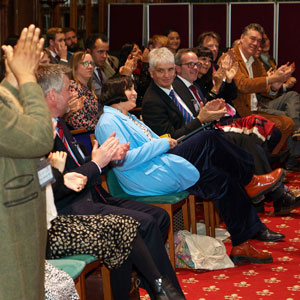 “I’m grateful for this bursary. It means permission to be creative and allocated time to do so. It means a part of my brain can be unlocked that would otherwise be in survival mode and dormant. It means I can bring friends into my craft and share it with them and it means meeting other makers like you. I’d like other people to experience this sense of quiet power. The feeling of being in a workshop, making, connected to your body, mind and material. I’d also like to hear from voices less heard and see more black and brown role models because I know I’ve got a lot to learn from differing perspectives. We all do.
“I’m grateful for this bursary. It means permission to be creative and allocated time to do so. It means a part of my brain can be unlocked that would otherwise be in survival mode and dormant. It means I can bring friends into my craft and share it with them and it means meeting other makers like you. I’d like other people to experience this sense of quiet power. The feeling of being in a workshop, making, connected to your body, mind and material. I’d also like to hear from voices less heard and see more black and brown role models because I know I’ve got a lot to learn from differing perspectives. We all do.
“I’m grateful for the grant and I’m grateful to meet you guys today. I love sharing food so if anyone wants to eat together and hang just give me a shout.”
Hannah’s bursary was supported by the City & Guilds Foundation. Photos by Stefan Jakubowski.
A thatching spar maker, a pigment maker, and a boatbuilder are among the recipients of a new round of grants to help safeguard some of the UK’s most endangered craft skills.
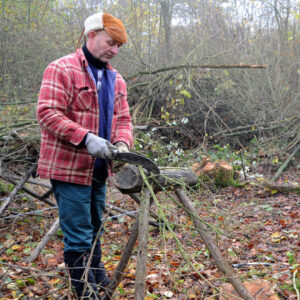 Heritage Crafts has awarded the grants through its Endangered Crafts Fund, which was launched in 2019 to increase the likelihood of at-risk craft skills surviving into the next generation. Six of this round’s grants are funded by the Sussex Heritage Trust, the Ashley Family Foundation for Wales, and the Essex Community Foundation and were ring fenced for crafts practitioners within those areas.
Heritage Crafts has awarded the grants through its Endangered Crafts Fund, which was launched in 2019 to increase the likelihood of at-risk craft skills surviving into the next generation. Six of this round’s grants are funded by the Sussex Heritage Trust, the Ashley Family Foundation for Wales, and the Essex Community Foundation and were ring fenced for crafts practitioners within those areas.
In May this year Heritage Crafts published the fourth edition of its groundbreaking Red List of Endangered Crafts, the first research of its kind to rank the UK’s traditional crafts by the likelihood that they will survive into the next generation. The report assessed 259 crafts to ascertain those which are at greatest risk of disappearing, of which 84 were classified as ‘endangered’ and a further 62 as ‘critically endangered’.
The nine successful recipients are:
- Andy Basham from Essex, for himself and others to learn to make thatching spars from the last spar maker in East Anglia, and equip himself for production from his hazel coppice.
- Will Holland from Carmarthenshire, to develop his arrowsmithing skills and master the reproduction of historically forged arrowheads, and to teach the craft to others.
- Charlotte Kenward from West Sussex, to train and equip herself to offer traditional reverse gilded house numbers and signage to heritage properties.
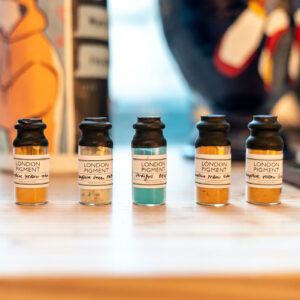 Lucy Mayes from London, to purchase equipment to produce a range of innovative and sustainable pigments from processing construction waste.
Lucy Mayes from London, to purchase equipment to produce a range of innovative and sustainable pigments from processing construction waste.- Gail McGarva and the team at Building Futures Galloway, to equip a community workshop on the Solway Firth with tools needed to teach young people traditional wooden boatbuilding.
- Rob Shaw and team, from North Yorkshire, to equip the new coach trimming workshop of Embsay & Bolton Abbey Steam Railway, offering a space to train more of their volunteers.
- Travis Smith from Hampshire, to train in hand hewing of timber and apply his skills to the restoration and reconstruction of historical building and the construction of new ones.
- Stephanie Turnbull from Newport, to trial the use of alternative types of limestone and other stone substrates for lithographic printing, and to publish her findings.
- Jessie Watson-Brown, Matthew Bailey and Jamey Rhind-Tutt from Devon, to equip a new tannery to produce traditional bark-tanned leather from wild deer skins.
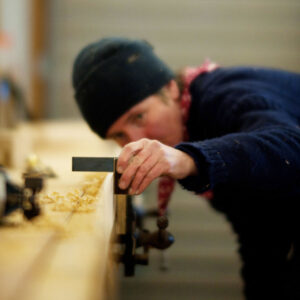 These nine projects follow 57 others awarded in previous rounds, covering endangered crafts such as coppersmithing, Highland thatching, sailmaking and many more. Previous funders have included the Radcliffe Trust, the Pilgrim Trust, the Dulverton Trust, the Swire Charitable Trust and others, as well as individuals who have donated sums from £5 right up to several thousands of pounds.
These nine projects follow 57 others awarded in previous rounds, covering endangered crafts such as coppersmithing, Highland thatching, sailmaking and many more. Previous funders have included the Radcliffe Trust, the Pilgrim Trust, the Dulverton Trust, the Swire Charitable Trust and others, as well as individuals who have donated sums from £5 right up to several thousands of pounds.
As usual the fund was oversubscribed, and Heritage Crafts hopes to work with many of the unsuccessful candidates to identify other funding and support opportunities.
Mary Lewis, Heritage Crafts Endangered Crafts Manager, said:
“The survival of endangered craft skills relies on the people who make a positive choice to learn, make and teach these crafts. These projects will provide future generations with opportunities that they might not otherwise have, to become productive and healthy members of our shared craft community and to safeguard this important part of our national heritage.”
View the full list of the 66 grants awarded to date
 This training bursary is targeted at trainees and prospective trainees of fashion textile crafts who are experiencing financial hardship. It is sponsored by The Costume Society and is one of a suite of awards and bursaries offered by Heritage Crafts to support and celebrate heritage craftspeople.
This training bursary is targeted at trainees and prospective trainees of fashion textile crafts who are experiencing financial hardship. It is sponsored by The Costume Society and is one of a suite of awards and bursaries offered by Heritage Crafts to support and celebrate heritage craftspeople. Many people are dissuaded from training in fashion textile crafts because of the cost, and therefore the make-up of the sector is not truly representative of the mix of backgrounds that make up the UK as a whole. This bursary has been set up to help cover or subsidise the cost of training for someone who would otherwise be prevented from pursuing this career path as a result of the cost.
Many people are dissuaded from training in fashion textile crafts because of the cost, and therefore the make-up of the sector is not truly representative of the mix of backgrounds that make up the UK as a whole. This bursary has been set up to help cover or subsidise the cost of training for someone who would otherwise be prevented from pursuing this career path as a result of the cost.

 YEAR 2 THEME: ENDANGERED CRAFTS
YEAR 2 THEME: ENDANGERED CRAFTS For 25 years everything about the 17th-century Manor was of profound inspiration to William Morris. Both the Manor and its setting in rural Oxfordshire were a fertile source of ideas, influencing his art, literature and social thinking as well as his passionate, imaginative engagement with history and nature. Integral to Morris’s ethos was his tireless championing of heritage crafts and the handmade. Morris’s values have never been more relevant than they are today.
For 25 years everything about the 17th-century Manor was of profound inspiration to William Morris. Both the Manor and its setting in rural Oxfordshire were a fertile source of ideas, influencing his art, literature and social thinking as well as his passionate, imaginative engagement with history and nature. Integral to Morris’s ethos was his tireless championing of heritage crafts and the handmade. Morris’s values have never been more relevant than they are today. William Morris once described Kelmscott Manor’s beauty and atmosphere as very stimulating to the imagination. We are seeking an MiR who will be as inspired by it as Morris was over 150 years ago, and who can inspire and enthuse others by encouraging creative engagement. The MiR will be a professional working in an endangered craft that features in the 2023 edition of the Red List; we are keen to emphasise to potential applicants that our interest is not limited to practitioners of one of the crafts Morris himself was interested in or practiced.
William Morris once described Kelmscott Manor’s beauty and atmosphere as very stimulating to the imagination. We are seeking an MiR who will be as inspired by it as Morris was over 150 years ago, and who can inspire and enthuse others by encouraging creative engagement. The MiR will be a professional working in an endangered craft that features in the 2023 edition of the Red List; we are keen to emphasise to potential applicants that our interest is not limited to practitioners of one of the crafts Morris himself was interested in or practiced. “I burnt out in an office job during the pandemic, as Equity, Diversity and Inclusion Lead, when I realised my role was tickboxing and that nothing would change. It broke my heart. To deal with the burnout I spent time in the forest as a Ranger and that was the first time I used power tools. Learning more about wood as a material and a living part of the habitat became integral to my existence. It became part of who I was. I shifted everything to make it my focus.
“I burnt out in an office job during the pandemic, as Equity, Diversity and Inclusion Lead, when I realised my role was tickboxing and that nothing would change. It broke my heart. To deal with the burnout I spent time in the forest as a Ranger and that was the first time I used power tools. Learning more about wood as a material and a living part of the habitat became integral to my existence. It became part of who I was. I shifted everything to make it my focus. “I think I can get through pretty much anything as long as I am a maker. It helps me process life and helps me know myself better, which in itself is a powerful thing. Not everyone will be able to live their life as themselves or to know what their voice is or what creativity means to them. We are able to speak without needing words and show these parts of ourselves through the things we make. There’s something incredible in that.
“I think I can get through pretty much anything as long as I am a maker. It helps me process life and helps me know myself better, which in itself is a powerful thing. Not everyone will be able to live their life as themselves or to know what their voice is or what creativity means to them. We are able to speak without needing words and show these parts of ourselves through the things we make. There’s something incredible in that. “I’m grateful for this bursary. It means permission to be creative and allocated time to do so. It means a part of my brain can be unlocked that would otherwise be in survival mode and dormant. It means I can bring friends into my craft and share it with them and it means meeting other makers like you. I’d like other people to experience this sense of quiet power. The feeling of being in a workshop, making, connected to your body, mind and material. I’d also like to hear from voices less heard and see more black and brown role models because I know I’ve got a lot to learn from differing perspectives. We all do.
“I’m grateful for this bursary. It means permission to be creative and allocated time to do so. It means a part of my brain can be unlocked that would otherwise be in survival mode and dormant. It means I can bring friends into my craft and share it with them and it means meeting other makers like you. I’d like other people to experience this sense of quiet power. The feeling of being in a workshop, making, connected to your body, mind and material. I’d also like to hear from voices less heard and see more black and brown role models because I know I’ve got a lot to learn from differing perspectives. We all do. Heritage Crafts has awarded the grants through its Endangered Crafts Fund, which was launched in 2019 to increase the likelihood of at-risk craft skills surviving into the next generation. Six of this round’s grants are funded by the Sussex Heritage Trust, the Ashley Family Foundation for Wales, and the Essex Community Foundation and were ring fenced for crafts practitioners within those areas.
Heritage Crafts has awarded the grants through its Endangered Crafts Fund, which was launched in 2019 to increase the likelihood of at-risk craft skills surviving into the next generation. Six of this round’s grants are funded by the Sussex Heritage Trust, the Ashley Family Foundation for Wales, and the Essex Community Foundation and were ring fenced for crafts practitioners within those areas. Lucy Mayes from London, to purchase equipment to produce a range of innovative and sustainable pigments from processing construction waste.
Lucy Mayes from London, to purchase equipment to produce a range of innovative and sustainable pigments from processing construction waste. These nine projects follow 57 others awarded in previous rounds, covering endangered crafts such as coppersmithing, Highland thatching, sailmaking and many more. Previous funders have included the Radcliffe Trust, the Pilgrim Trust, the Dulverton Trust, the Swire Charitable Trust and others, as well as individuals who have donated sums from £5 right up to several thousands of pounds.
These nine projects follow 57 others awarded in previous rounds, covering endangered crafts such as coppersmithing, Highland thatching, sailmaking and many more. Previous funders have included the Radcliffe Trust, the Pilgrim Trust, the Dulverton Trust, the Swire Charitable Trust and others, as well as individuals who have donated sums from £5 right up to several thousands of pounds.
